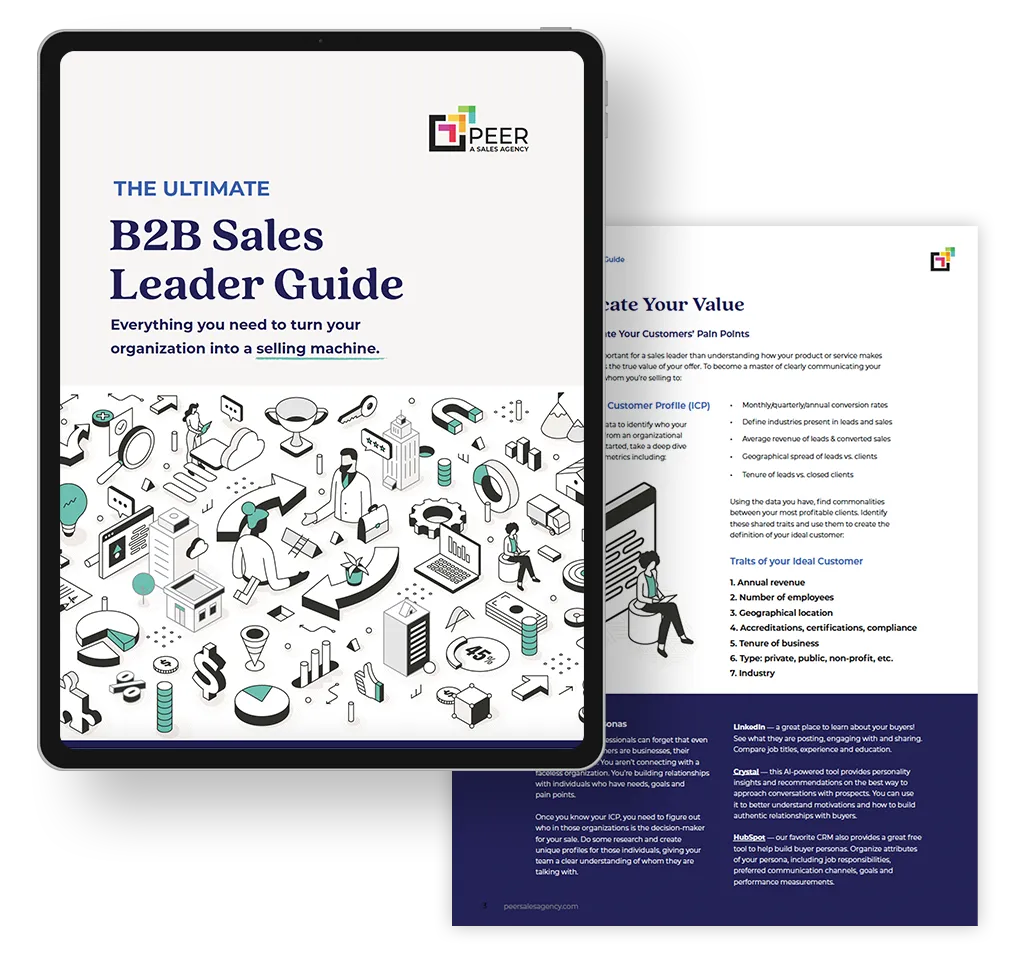Imagine your potential customer is out on the road, hitchhiking. You pull over to give him a ride, and there are things he needs to know right now before he even thinks about climbing aboard.
- Can I trust this person?
- Do they know how to get me where I need to be?
- Can this car even make it to my destination?
Like hitchhiking, deciding to hop in and try your product or service can be nerve-wracking for your prospects. They have a lot on the line, and they need to know they’re going to be in good hands.
That’s where using social proof, like case studies and testimonials, helps you shine. By showcasing the successes that others have achieved using your solution, you help your new prospects see themselves in the promised land.
These success stories become powerful tools to inspire prospects, build trust, and drive conversion when turned into case studies and deployed throughout your sales & marketing strategy.
Why Bother Creating Case Studies?
People buy from people, and people love a story. Case studies provide relatable stories that customers can connect with. By showcasing individuals or businesses facing similar challenges, you can create a sense of empathy, experience, and understanding.
Prospects want to feel confident that they’re making the right choice for their businesses when they make a new partnership or purchase. Your prospects need to feel convinced that your solution is the right solution.
78% of B2B buyers find case studies to be the most convincing form of content when making purchasing decisions.
—Demand Gen Report
Case studies allow you to tell a compelling story that resonates with your target audience. By presenting real-life challenges, solutions, and outcomes, you can engage readers and create a connection with their own experiences or aspirations.
Case studies demonstrate your expertise
You can showcase your skills, knowledge, and experience in a particular field or industry by sharing detailed case studies. This allows potential clients or partners to gain insight into your capabilities and builds trust in your abilities.
Case studies provide social proof
Case studies act as social proof, demonstrating to others that your solutions and services have delivered positive results for your clients. This can be a powerful tool in establishing credibility and attracting new business.
Case studies highlight your differentiators & help you stand out
Each case study provides an opportunity to highlight your unique approach to problem-solving. By sharing the specific strategies, methodologies, and techniques used, you can differentiate yourself from competitors and position yourself as a thought leader in your field.
Case studies back your claims up with real data
These assets are a great way to tell a “data story,” and provide real-world analytics and monetary, ROI results as you detail the impact of your solutions with real customers. By analyzing the results achieved in each case study, you can identify patterns, trends, and even areas of improvement, ultimately enhancing the effectiveness of your offerings.
Case studies increase brand trust & authority
Case studies are a powerful tool for increasing brand trust. When customers see real-life examples of how a product or service has helped others, they are more likely to trust that it can help them too. Here’s how:
Authenticity: Case studies provide concrete evidence that your claims of success are true. By showcasing real customers and their experiences, brands demonstrate their authenticity and credibility.
Transparency: Case studies offer an honest and transparent view of a brand’s products and services. Your prospects can quickly move to the next stage of the funnel if they’re interested, or quickly disqualify themselves if your service isn’t a fit. (Self-disqualification is just as important to a speedy sales cycle.)
Problem-solving: Case studies demonstrate how your business can effectively solve a customer’s problem or address their pain points. Your customer begins to see you as a valuable partner and your product as a great tool in their arsenal.
By providing tangible evidence, social proof, and relatable stories, case studies help customers trust that a brand can deliver on its promises and meet their needs.
Okay, I believe in case studies now. What goes into a high-impact case study?
Case studies serve as the bridge between skepticism and trust. Statistics show that presenting a relevant, well-architected case study can boost client trust, paving the way for a smoother sales conversation and more revenue to come — in fact, Neil Patel shows a 70% improvement in deals won when case studies are used.
When it comes to showcasing the past success and future potential of your offering, a high-impact case study will make a difference. So, what exactly goes into creating a case study that leaves a lasting impression?
A specific, real challenge or problem
Start every case study by asking yourself a few questions to identify the case study topic that will make the biggest impact on future sales.
- What problems do you say you solve for prospects? Your messaging matrix is a great place to start for this step.
- Do you have prospects in the pipeline with that problem? You’ll get more use out of your case study if you can inject it into your sales & marketing process right away.
- Which customers have you solved that problem for? This is your short list of potential case study subjects.
- Finally, of those customers, which ones are raving fans who have achieved impressive results with your solution at their side? These are the customers you’ll want to create case studies around.
Fact-based results
Speaking of impressive results, fact-based results & impact statements are a crucial aspect of any case study, as they provide proof and credibility to the claims made. You’ll need to be prepared to back up outcomes with data or first-hand accounts from your happy customers.
One way to incorporate fact-based results is by providing step-by-step details of how the product or service was used. This demonstrates the practical application of your solution, which helps your potential customers visualize themselves using it.
Don’t skimp on the data. It’s an essential component in establishing fact-based results. Numbers, statistics, and other measurable indicators can support the claims made in the case study. This data can come from various sources, such as your own internal surveys and analytics or your customers’ records and testimonials.
Testimonials, especially, go a long way. First-hand accounts from real users or happy customers can provide valuable insights and substantiate the claims that your sales & marketing materials make. Testimonials and reviews create a sense of authenticity and credibility, as they come directly from individuals who have experienced the benefits firsthand.
Visual content
The visual presentation of your case study can be a make-or-break aspect when it comes to impact and usability. Visuals have the unique ability to quickly convey information clearly and concisely. They can simplify complex data, making it easier for readers to digest and understand.
Charts and infographics allow us to present data in a visually appealing way. They can highlight key points and trends, making it easier for readers to grasp the main takeaways from the case study. Additionally, before and after pictures provide a visual representation of the impact our product or service has had on a specific situation. This visual evidence can be incredibly persuasive, helping to build trust and credibility with our audience.
Organize your content into a story
Hand in hand with the visual presentation of your case study comes the organization and layout of the content. A jumbled mess of charts and paragraphs will be much less effective than a case study that’s assembled to tell a story.
To effectively organize your case study, lean on storytelling elements: begin by introducing your main character and hero of the story – the customer. Provide a brief background on who they are and what challenges they were facing. This sets up the inciting incident, which is the problem or challenge the customer needed a solution for.
Next, present your organization as the secret weapon or sage advisor in the story, offering the solution to the customer’s problem and helping them defeat their monster. Highlight how your product or service addressed their needs and provided a solution.
Once the stage is set, it’s important to describe the steps taken by the customer to wield your product or take advantage of your service. This helps the reader understand the process and how your solution was integrated into their operations. Be sure to provide clear and concise information, using simple sentences and bullet points where necessary.
Next, conclude the hero’s story within the case study by describing and celebrating your happy ending. Highlight the results achieved by the customer after implementing your solution. This helps to reinforce the effectiveness of your product or service and leaves a lasting impression on the reader.
Finally, invite the reader to take the next step to defeat their own monster by providing a clear, simple call-to-action (CTA.) Your case study should only have one CTA, and it should be immediately clear what they need to do — and what benefits they’ll receive when they do it.
What do I do with the case study when it’s done?
Now that you’ve got a killer case study that tells a compelling story of success, with plenty of data points to back up your claims, you need to get it out into the wild. Both your sales and marketing departments should get a lot of mileage out of every case study you create, making this piece of sales enablement one of the better for ROI.
Here’s where your case study can make an impact on prospects, leads, and opportunities before and during the sales cycle:
On Your Website
Case studies play a vital role on a company website, as they offer a tangible representation of the value, success, and expertise that a business can bring to its clients. Implementing case studies on a website can benefit a company in several ways:
On the home page:
Showcase specific examples of successful projects or client outcomes, and grab those testimonial quotes to capture attention and pull the visitor onto the next page in your website’s intended journey.
On landing pages:
Prove the benefit of the offer or tool you’re trying to entice leads to convert on. This helps build trust and credibility with potential clients who don’t know who you are but clicked an interesting and relevant ad.
Add to Blogs and Articles
Related to your website, you’ll want to include case studies in your resources section. First, create a tag or tab that features all your case studies to make it easy for prospects to find proof when they’re looking for it.
In individual blogs and articles, case studies serve as powerful tools to enhance the credibility and effectiveness of your content. By including case studies, you can provide real-life examples that support your claims and engage your readers on a deeper level. Use your case studies as cited sources, link back to the case study on testimonial quotes, and don’t forget to offer them as the “next step” for reading in your blog’s CTA.
Throughout Your Sales Enablement Strategy
Adding new case studies to your existing Sales Enablement tools and strategies can increase their impact. Consider adding new case studies to your cold email outreach, meeting follow-up emails, sales presentation decks, and even your proposals.
Identify relevant case studies: Choose case studies that align with your target’s pain points and demonstrate how your solution solved similar challenges.
Incorporate case studies in email outreach: Add case studies to your email templates to grab the reader’s attention and provide a quick overview of the success waiting for them. Include links to detailed case studies for interested prospects.
Enhance your sales decks: Integrate case study and testimonial slides into your sales presentation to illustrate real-world examples of how your solution has addressed your prospect’s specific pain points in the past.
Strengthen your proposals: It’s not uncommon for an opportunity to get cold feet, even at the proposal stage. Include case studies and testimonial quotes in your proposal design as reassuring evidence of your company’s track record and ability to deliver results.
In each sales enablement asset, showcase the problem, solution, and outcomes achieved. You’ll instill confidence and build trust with potential clients, and you’ll increase your chances of moving that deal to Closed Won.
On Social Media
Social proof is, of course, a natural fit for social media content. Using quotes and data from your case studies as social media nuggets is a great way to get more use from the case study itself. It’s also a great way to meet prospects where they already spend their time.
Take time to craft attention-grabbing headlines, image copy, and post copy. Use catchy headlines that grab the reader’s attention and spark curiosity. For example, “How Company X Increased Sales by 50% in 3 Months.”
Keep it concise: Condense the content of your case studies into bite-sized pieces that are easy to consume on social media platforms. Use bullet points and subheadings to break up the text and make it visually appealing.
Don’t forget to reuse the visual elements, too. The infographics and charts you created as part of your case study can be reused on social.
Check Out These Case Study Examples
There are a lot of ways to share case studies online. The way your website utilizes case studies should be customized to your buyers’ journey. Peer, and the clients we help, use these case studies in a few ways:
The Library Approach: Case studies are organized as a unique tag among the other types of articles and blogs in your resource library.
The Website Page: Here, a whole page of the website is dedicated to case studies, testimonial quotes, and video case studies & success stories.
The Persona-Targeted Page: Only persona- & problem-relevant case studies and testimonials are presented in a format that appeals to that specific persona.
Live on Social Media: Social proof and social posts are a match made in heaven, after all.
Don’t Stop at Case Studies – Fill All Your Sales Enablement Gaps
While they’re a powerful tool, case studies are just one of the assets your sales and marketing strategy needs to incorporate to optimize for shorter sales cycles and more revenue won. Make sure your team has what they need to address prospect challenges at any stage of the funnel. Get our Revenue Generation Playbook now.



